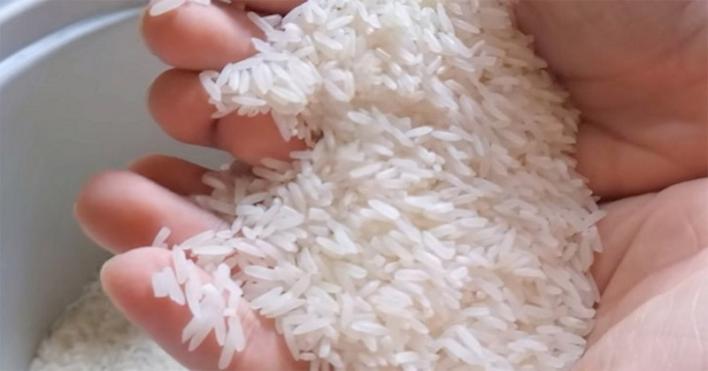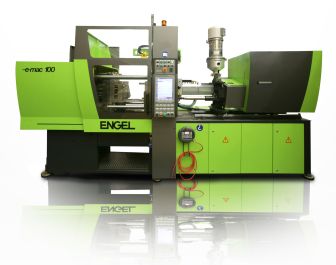By Dr L M K Tillekeratne
Retired Professor in Polymer Chemistry, USJP
Currently there is a fear psychosis spreading among people of Sri Lanka that rice made out of plastic has been imported to the country and is in circulation in the open market among other natural verities of rice. Many news reports have been appearing in the printed and electronic media about this danger and on how such harmful synthetic rice could be identified and distinguished from natural edible rice varieties available in the market.
These rumors first appeared soon after the floods in many parts of Sri Lanka in the month of May, after the arrival of humanitarian aid to flood victims from overseas. Even though the reason behind these rumors is not known, people all over the country are shaken by these false rumors and inquire from grocery shop owners and from officials in the health sector whether the rice they buy for their staple food is genuine natural rice or so called harmful plastic rice. This fear, created for some unknown reason, is quite similar to the fear created among Buddhist devotees planning to visit Kataragama and Sithulpahuwa during the Poson week and restricted them to their houses during the Poson full moon week. This was because,a few weeks prior to that, it was reported in a newspaper that there would be a big tsunami on the 8th or 9th June and that would kill millions of people in coastal areas in the south of Sri Lanka. A few days after the Poson full moon day, the chief incumbent of one of the main Buddhist religious place in the south reported in newspapers that the Poson Full moon day this year recorded the lowest turnover of devotees who visited famous temple in the south for several decades due to this rumor spread by an errant astrologer.
From the beginning of the 19th century, after the discovery of macromolecular structure of polymers, plastic industry grew rapidly replacing materials such as natural fibers like cotton and silk and even material like metal and wood owing to the versatile nature of these plastics which are polymers. Today, plastics are important industrial materials used in all fields of industry, such as polyethylene and poly propylene for wrapping purposes and for making all kinds of cans and even large water tanks, paints and varnishes. Melamine formaldehyde commonly known as Melaware is used to make electrical appliances and crockery items. Extra hard polymer material such as ABS is used to make automobile components and toys.
Apart from elastomers like rubber and fibers like nylon and polyester, polymers are divided into two main groups, namely thermo plastics and thermosets. Thermoplastics are heat-sensitive and they become softer at high temperatures. They are molded at high temperature into various items used in day-to-day life such as tumblers, cups, foot rulers, combs, soap containers, cans and water tanks etc. In thin film form, they are most useful for wrapping and packing purposes particularly for food items. A major issue with these materials is the time taken to perish and mix with the soil when they are thrown into dumping yards after use in comparison to perishable wastes like paper and dried leaves of coconut or Palmyra. However, they can be recycled and converted into other products thereby mitigating this problem. This process of recycling is not only beneficial in solving the environmental problem, but countries like Sri Lanka can minimize the foreign exchange used to import fresh virgin polymer materials to feed the industry. Thermosets such as Melaware and Bakelite on the other hand are network polymers, which are infusible and insoluble in solvents and hence cannot be recycled. Disposal of old thermoset plastics is therefore a problem all over the world.
During the conversion of thermoplastic polymers into items like food containers or household appliances, a large portion of the plastic sheet used to click out the item remains as off cuts. These off cuts are reused to make more items or different other items by converting them into fine powders, grains, pellets or to thin short pieces that resemble long grain rice. The reason for doing this is to feed them into moulds by pumping through thin tubes. Although these plastic pieces look a little like rice, the two ends are sharp cut to give the grain a cylindrical shape and are not pointed like in rice grains. Therefore, it is very easy to identify them even if mixed with white rice. There are instances where these granulated polymers are incorporated with coloured dyes to make colour master batches to be used to make coloured end products.
All these thermoplastic polymers are lighter than water and therefore, float on the surface when mixed with water. None of these thermoplastic polymers can be converted into material that resembles boiled rice. It has been reported in the internet that boiled plastic rice can be molded into a ball by pressing with fingers on the palm. This is another canard. In order to make a spherical ball, the polymer must be softened to the level of rice and also, it must be sticky like rice. None of the thermoplastic polymers mentioned above assumes that characteristic when boiled in water. Polystyrene, commonly known as cellulite, softens on boiling and change shape, but reverts to the original rigid nature, though the shape is distorted, soon after cooling to room temperature. They remain in the same particle form without changing their shape or the rigid nature below their melting temperatures which are much higher than the water boiling temperature. Therefore, there is no reason for anyone to harbor even a slight fear that the rice you buy from any grocery shop will have plastic rice mixed with it. Moreover, all these thermoplastics mentioned above are more expensive than rice and hence no sensible person will mix rice with grains of plastics for making higher profits.
From these technical facts, it is clear that there is no plastic rice made anywhere in the world to adulterate edible natural rice with. The fear created among the public about artificial rice is somewhat similar to the rumors spread about a tsunami reaching the southern coast of the country killing thousands of people last week. In this context, it must be mentioned that currently there is no technology available anywhere in the world to detect a tsunami a few days before the tremor. It is possible to measure the magnitude of an earthquake only after it has occurred, and then from the speed of the tidal wave created, it is possible to estimate after how many hours a tsunami can arrive in a coastal area directly facing the earthquake site, but never before that. Therefore, the public should not panic and react to this type of false rumors spread by rumor mongers forum known reasons.
Source: http://www.island.lk/index.php?page_cat=article-details&page=article-details&code_title=166939






